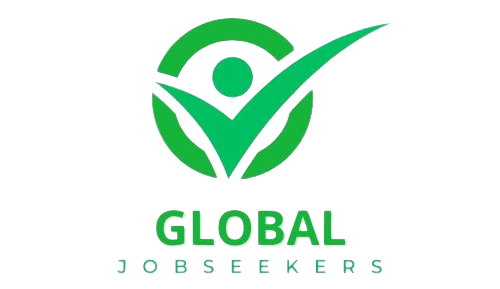Best Websites To Find Jobs In New Zealand
New Zealand is known for its high quality of life, stunning natural landscapes, and thriving job market. Whether you’re an international job seeker, an expat, or a local looking for work, New Zealand offers a wide range of employment opportunities across various sectors. In this article, we will explore the best websites to help you find jobs in New Zealand. 1. Seek New Zealand Website: www.seek.co.nz Seek is one of New Zealand’s most popular job search websites, providing job listings across a variety of industries. It features full-time, part-time, temporary, and freelance positions. Seek also offers resources like salary guides, career advice, and tools to help job seekers create standout resumes. Pros: Large number of listings, easy-to-use interface, advanced search filters. Best For: Professionals, skilled workers, and entry-level job seekers. 2. Trade Me Jobs Website: www.trademe.co.nz/jobs Trade Me Jobs is the job listing platform of Trade Me, New Zealand’s leading online marketplace. This site has a comprehensive database of job listings from a wide range of industries, from retail and hospitality to technology and healthcare. The website also allows users to create and manage job alerts and receive updates on new job listings. Pros: Wide variety of job categories, includes listings from both large companies and small businesses. Best For: A wide range of job seekers, especially those looking for roles in customer service, retail, or trades. 3. LinkedIn Website: www.linkedin.com LinkedIn is a global platform that offers extensive job listings in New Zealand. By creating a professional profile, you can not only apply for jobs but also network with industry professionals, receive job recommendations, and connect with potential employers. LinkedIn is especially valuable for professionals looking for roles in management, technology, finance, and other corporate sectors. Pros: Networking opportunities, personalized job recommendations, company insights. Best For: Professionals, tech workers, and those in leadership roles. 4. MyJobSpace Website: www.myjobspace.co.nz MyJobSpace is a New Zealand job portal that connects job seekers with employers across a variety of industries. The site features both full-time and part-time jobs, internships, and opportunities for job seekers at every level of experience. It also allows users to upload their CVs, making it easier for employers to find candidates. Pros: Offers a wide range of job listings, including entry-level and specialized roles. Best For: General job seekers, including graduates and those looking for entry-level opportunities. 5. Job.co.nz Website: www.job.co.nz Job.co.nz is a popular New Zealand-based job portal that provides a variety of job opportunities across industries such as construction, IT, sales, hospitality, and healthcare. The site has an easy-to-use interface and regularly updates listings for new vacancies. Pros: Comprehensive job categories, user-friendly design. Best For: Job seekers looking for roles in customer service, sales, and technical fields. 6. Workhere New Zealand Website: www.workhere.co.nz Workhere is a job portal designed specifically for foreign workers looking to move to New Zealand. The website focuses on attracting skilled workers to New Zealand and features job listings in sectors such as IT, engineering, healthcare, and more. Workhere also provides helpful resources on visa information, relocation tips, and advice for newcomers to New Zealand. Pros: Focuses on job opportunities for immigrants, visa advice, and relocation support. Best For: Skilled immigrants and professionals looking to work in New Zealand. 7. Indeed New Zealand Website: www.indeed.co.nz Indeed is a well-known global job search engine, and its New Zealand portal offers a wide range of job listings across different industries. Users can search for positions by location, salary, and job title, and receive job alerts based on their preferences. Indeed also features reviews of companies and salary information, helping job seekers make informed decisions. Pros: Easy to use, extensive job listings, company reviews. Best For: Job seekers across various industries, including those seeking full-time and part-time positions. 8. NZ Herald Jobs Website: www.nzherald.co.nz/jobs NZ Herald Jobs is a job search platform associated with New Zealand’s largest daily newspaper, The New Zealand Herald. The site provides job listings from a wide range of industries, including advertising, engineering, healthcare, and education. The NZ Herald is a reputable source, and its job portal is regularly updated with new listings. Pros: Listings from reputable companies, helpful job search resources. Best For: Professionals and skilled workers in a variety of industries. 9. Backpacker Job Board Website: www.backpackerboard.co.nz Backpacker Job Board is a platform for those seeking short-term or seasonal employment while traveling in New Zealand. Many international travelers, working holiday visa holders, and backpackers use this site to find part-time jobs in hospitality, tourism, agriculture, and more. It’s ideal for those looking to work while exploring New Zealand. Pros: Focus on short-term, casual, and seasonal jobs, great for backpackers. Best For: Travelers, working holiday visa holders, and those seeking temporary work. 10. Hospitality Online Website: www.hospitalityonline.co.nz If you’re interested in working in the hospitality industry in New Zealand, Hospitality Online is a great place to start. The platform features job listings for roles in hotels, restaurants, cafes, and bars. It also has industry-specific resources and advice for hospitality workers. Pros: Focus on hospitality jobs, industry-specific advice. Best For: Job seekers looking for roles in the hospitality and tourism industries. New Zealand offers a wide array of job opportunities for both locals and international job seekers. Whether you’re looking for full-time work, part-time positions, or seasonal employment, there are plenty of resources available online to help you find the right job. Popular websites like Seek, Trade Me Jobs, LinkedIn, and Workhere New Zealand provide a broad spectrum of job listings across industries, making it easier for job seekers to connect with potential employers.
Best Websites To Find Jobs In New Zealand Read More »










